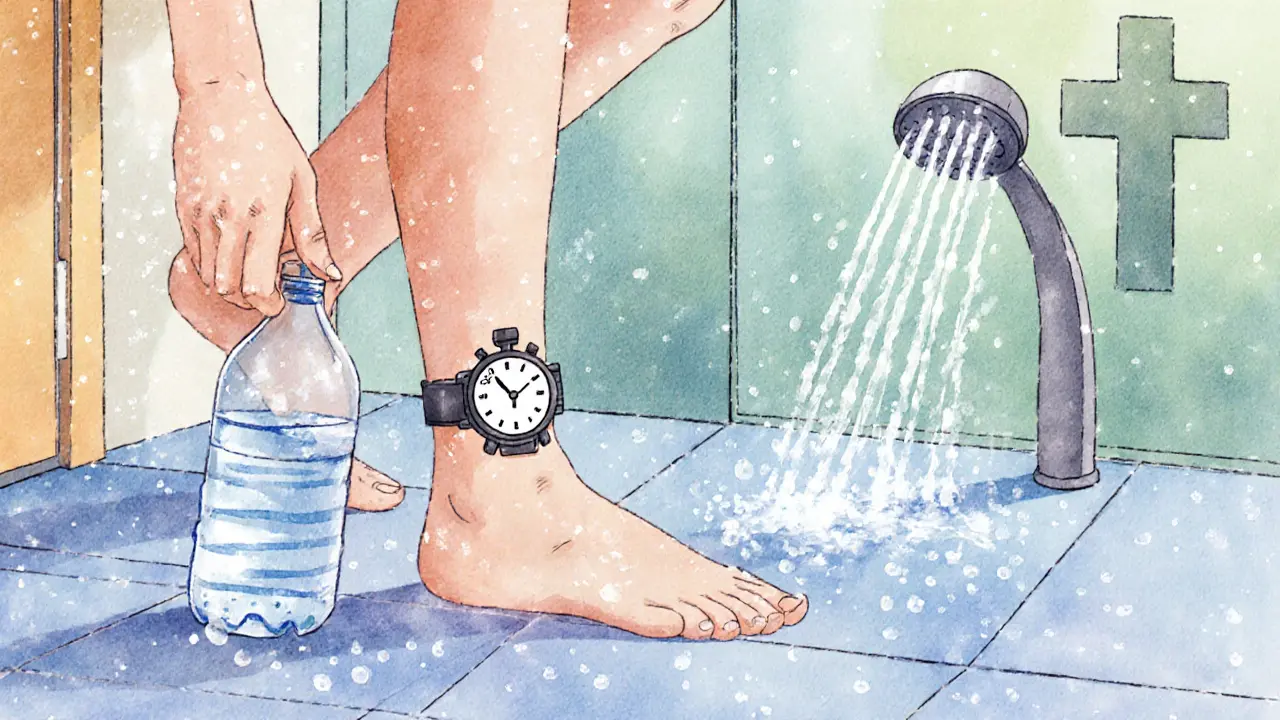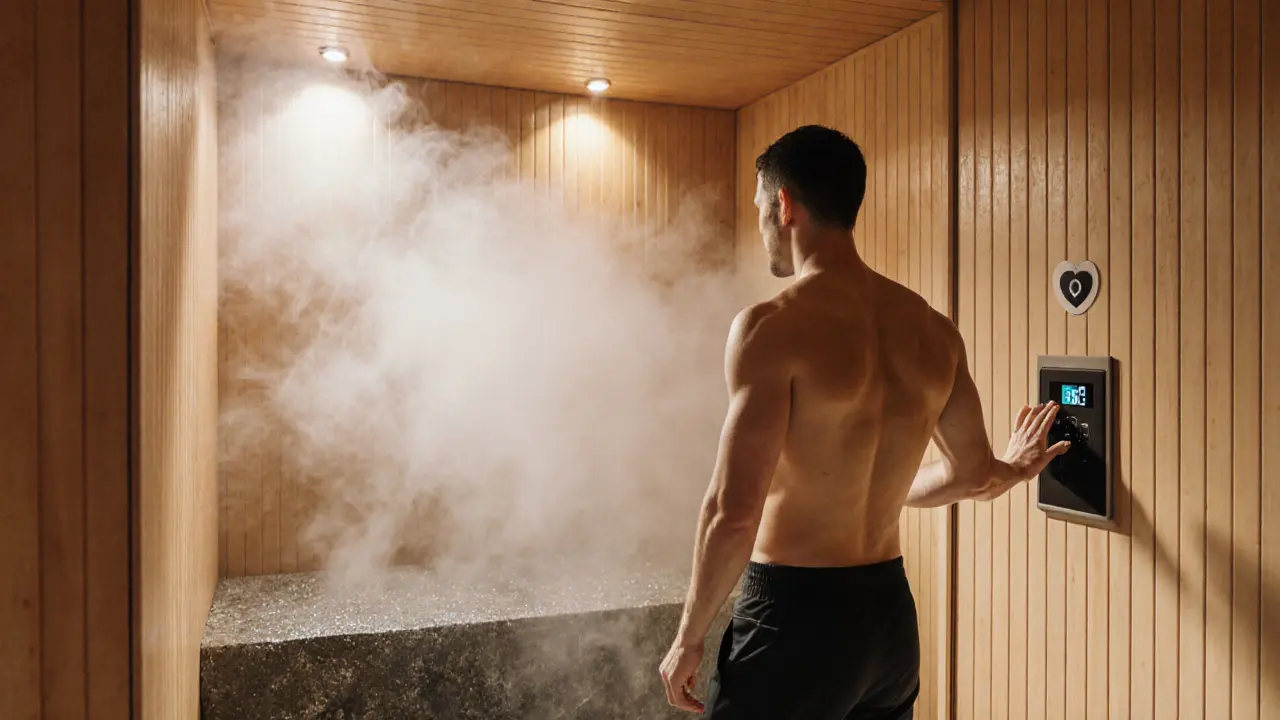Before you step into the soothing mist, know whether a steam room is a good fit for you. Below is a quick snapshot of the key takeaways:
- People with heart problems, uncontrolled blood pressure, or recent surgeries should stay out.
- Pregnant individuals, the elderly, and small children face higher heat‑related risks.
- Skin conditions like eczema or respiratory issues such as asthma can worsen in high humidity.
- Staying hydrated, limiting sessions to 15‑20 minutes, and listening to your body are essential safety steps.
Steam Room is a heated enclosure that fills the air with moist, near‑saturation vapor, typically ranging from 110°F to 120°F (43°C‑49°C). Its purpose is to promote relaxation, improve circulation, and open the pores for skin cleansing. While many enjoy the warm hug of a steam bath, steam room safety hinges on knowing who might be harmed rather than helped.
Understanding the Basics of Steam Rooms
Origins and History
The concept dates back to ancient Roman baths, where communal steam chambers were a staple of public hygiene. Over centuries, the practice traveled to Turkish hammams and Japanese onsen, each adding cultural twists but retaining the core idea: using moist heat for health and social bonding.
Core Components
A modern steam room relies on three main elements: a sealed enclosure, a steam generator that boils water, and a control panel to set temperature and timer. The humidity stays close to 100%, which distinguishes it from dry‑heat saunas. This moist environment encourages vasodilation-blood vessels expand-leading to a gentle rise in heart rate.
How Steam Rooms Differ from Saunas
Both are heat therapies, yet the experience diverges sharply. Below is a side‑by‑side look:
| Practice | Heat Type | Typical Temperature | Humidity | Main Benefit |
|---|---|---|---|---|
| Steam Room | Moist | 110‑120°F (43‑49°C) | ≈100% | Deep skin cleansing, relaxed breathing |
| Sauna | Dry | 160‑200°F (71‑93°C) | 10‑20% | Intense sweat, cardiovascular boost |
| Hot Tub | Warm water immersion | 100‑104°F (38‑40°C) | 100% (water) | Muscle relaxation, joint relief |
The moist heat of a steam room penetrates the skin differently, which can be a blessing for some and a hazard for others.
Who Can Benefit from Steam Rooms?
Regular users often report softer skin, reduced sinus congestion, and a sense of calm after a short session. Athletes use them to accelerate warm‑up, while people with mild arthritis enjoy the gentle joint lubrication. However, benefits assume the user starts in good health and follows safety guidelines.
Risks and Who Should Avoid Steam Rooms
Cardiovascular Concerns
Heat forces the heart to work harder to move blood to the skin. For most healthy adults, this is harmless, but Hypertension (high blood pressure) or existing Cardiovascular disease can turn a relaxing session into a dangerous spike in blood pressure. The American Heart Association advises anyone with uncontrolled hypertension, recent heart attack, or valve problems to skip the steam room until cleared by a physician.
Respiratory and Skin Conditions
While the humid air can soothe dry sinuses, it may aggravate Asthma or chronic bronchitis. The warm vapor can also trigger flare‑ups in Eczema and other skin conditions, because prolonged moisture can disrupt the skin barrier.
Pregnancy and Fertility
Expectant mothers face two main issues: overheating (hyperthermia) that may affect fetal development, and a widened blood vessel system that can lead to dizziness. The National Institutes of Health recommend pregnant individuals avoid environments hotter than 100°F (38°C) for more than 10‑15 minutes, making steam rooms a risky choice.
Elderly, Children, and Others with Mobility Limits
The Elderly often have reduced thermoregulatory capacity, making it harder to tell when they’re overheating. Small children’s bodies heat up faster, so most spa facilities set a minimum age of 12. Anyone with limited mobility should also consider the slippery floor risk.
Metabolic Disorders
Individuals with Diabetes may experience sudden drops in blood sugar if they don’t hydrate or eat before a session. The heat can also mask early signs of hypoglycemia, such as dizziness.
Contraindications at a Glance
| Condition | Why It’s Risky | Recommended Action |
|---|---|---|
| Uncontrolled Hypertension | Heat raises blood pressure | Consult doctor before use |
| Recent Cardiac Surgery | Stress on healing tissue | Avoid until cleared |
| Pregnancy (2nd & 3rd trimester) | Risk of hyperthermia | Skip or limit to <10min |
| Severe Asthma | Moist air can trigger attacks | Use a dry sauna instead |
| Eczema flare‑ups | Prolonged moisture irritates skin | Postpone until skin calms |
| Diabetes with insulin therapy | Blood‑sugar swings | Check levels before & after |
| Children under 12 | Overheating risk | Wait until age limit met |
| Mobility impairments | Slip & fall hazards | Seek accessible facilities |
Safety Tips and Precautions
Hydration is Key
Drink 8‑12oz of water 30minutes before entering, and have a bottle handy for short sips during the session. Avoid alcohol or caffeine, which can dehydrate you faster.
Limit Session Length
Start with 5‑10 minutes, especially if you’re new. Most experts suggest capping total exposure at 15‑20 minutes per visit. If you feel light‑headed, exit immediately.
Cool‑Down Properly
After stepping out, spend a few minutes in a cooler, dry area. A brief cold‑shower can help normalize heart rate and prevent a sudden drop in blood pressure.
Mind Your Medications
Some drugs-like beta‑blockers, diuretics, or muscle relaxants-affect how your body handles heat. Talk to your pharmacist or doctor before incorporating steam sessions into your routine.
Watch for Warning Signs
Feeling dizzy, nauseous, or experiencing a rapid heartbeat (>120bpm) means you should leave the steam room right away. Also, note any skin redness that doesn’t fade within a few minutes; it may be an early burn.

Frequently Asked Questions
Can I use a steam room if I have high blood pressure?
If your hypertension is well‑controlled and your doctor has given the green light, a short, moderate‑temperature session (under 15 minutes) is usually safe. However, uncontrolled high blood pressure can spike dramatically in the heat, so you should avoid steam rooms until the condition is stabilized.
What’s the difference between a steam room and a sauna for someone with asthma?
A sauna’s dry heat is less likely to trigger bronchial irritation, whereas the moist air in a steam room can feel heavy and cause coughing in asthmatics. If you have asthma, a dry sauna or a warm shower is a safer alternative.
Is it safe for pregnant women to enjoy a steam room?
Most prenatal guidelines advise against steam rooms during the second and third trimesters because excessive core temperature can affect fetal development. A brief, low‑heat exposure in early pregnancy may be permissible, but always check with your obstetrician first.
How often can I use a steam room without harming my skin?
For most healthy skin types, two to three sessions a week are fine, provided you moisturize afterward and avoid overly long stays. People with eczema or psoriasis should limit use to once a week or skip it until their condition improves.
Do children ever use steam rooms safely?
Most spa operators set a minimum age of 12 because children’s bodies heat up faster and they can’t gauge discomfort well. If a facility allows younger kids, keep sessions under five minutes, stay close, and monitor temperature closely.
Bottom Line: Take the Heat Only If It Fits Your Health Profile
Steam rooms can be a wonderful way to unwind, but they’re not a one‑size‑fits‑all wellness tool. Review the list of contraindications, talk to your healthcare provider if you have any chronic conditions, and always start slow.
Got a personal story about steam rooms-good or bad? Share it in the comments and help others decide wisely. If you’re ready to explore safely, look for a reputable spa that follows hygiene standards and offers clear temperature controls.
Remember: the goal is relaxation, not risk. Choose wisely, stay hydrated, and enjoy the mist when it’s truly right for you.


Derren Spernol
October 13, 2025 AT 16:01Reading through the steam‑room safety guide feels like stepping into a modern‑day agora where ancient wisdom meets today's health paranoia, and I can't help but notice how meticulously the author maps out the physiological cascade that begins the moment you inhale that humid air; the vasodilation, the gentle cardiac workload increase, the skin's pores yawning open like tiny portals to a more supple self, all of which are described with a calm, almost Zen‑like patience that invites the reader to linger on each point. The author first reminds us that the heart, that tireless pump, must be in good shape before we subject it to the extra strain of heat, which is an observation that resonates with anyone who has ever felt their pulse quicken after a brisk jog. Then the piece gracefully transitions to the dangers for those with uncontrolled hypertension, noting that the heat can cause a dangerous spike in blood pressure, a fact that feels almost foreboding when you consider how easily blood pressure can sneak up on you. The discussion about recent cardiac surgery is equally thorough, warning that scar tissue needs time to knit back together before being battered by the circulatory demands of a steam environment, a point that could save lives if taken seriously. Moving on, the author addresses respiratory concerns, reminding us that while humid air can soothe dry sinuses, it can also act like a heavy blanket on asthmatic airways, turning a relaxing session into a cough‑inducing nightmare. The nuance continues with a section on skin conditions, where eczema sufferers are warned that prolonged moisture can disrupt the skin barrier, potentially leading to flare‑ups that are more uncomfortable than the steam itself. Pregnancy is handled with the same measured care; the risk of hyperthermia to the developing fetus is highlighted, and the recommendation to avoid temperatures above 100°F mirrors the cautionary tone found in many prenatal guidelines. Elderly individuals, whose thermoregulatory mechanisms are often dulled, are also advised to keep sessions brief, because the body’s ability to signal overheating diminishes with age. Children, whose tiny bodies can heat up in minutes, are similarly cautioned, reinforcing the common spa policy of a minimum age of twelve. The author does not shy away from metabolic disorders either, noting that diabetics may experience hypoglycemia masked by the heat, a subtle yet vital warning for anyone monitoring blood sugar. Throughout the article, practical tips like staying hydrated, limiting sessions to fifteen to twenty minutes, and listening to one's body are repeated like a mantra, cementing the idea that moderation is the key to enjoyment. The historical context-tracing steam rooms back to Roman baths, Turkish hammams, and Japanese onsen-adds a cultural richness that deepens the reader’s appreciation for this practice, while also underscoring how many civilizations recognized the therapeutic potential of moist heat. Finally, the piece concludes with a balanced bottom line: steam rooms can be a wonderful way to unwind, but they are not a one‑size‑fits‑all wellness tool, urging readers to consult healthcare providers and start slow, thereby wrapping up a comprehensive guide that is both informative and reassuring.